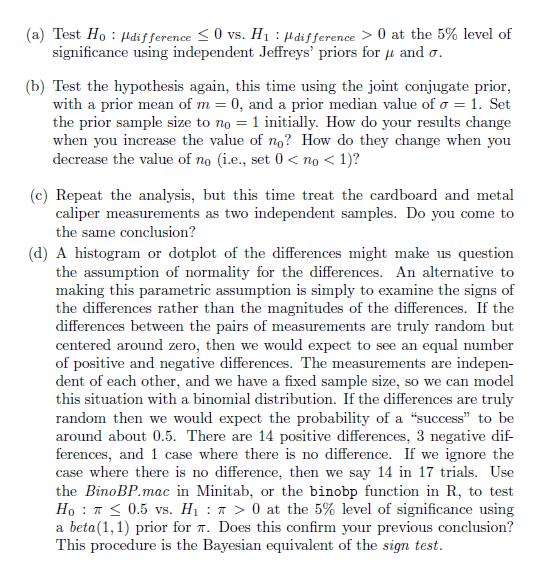Wild and Seber (1999) describe a data set collected by the New Zealand Air Force. After purchasing
Question:
Wild and Seber (1999) describe a data set collected by the New Zealand Air Force. After purchasing a batch of ight helmets that did not \(t\) the heads of many pilots, the NZ Air Force decided to measure the head sizes of all recruits. Before this was carried out, information was collected to determine the feasibility of using cheap cardboard calipers to make the measurements, instead of metal ones which were expensive and uncomfortable. The data lists the head diameters of 18 recruits measured once using cardboard calipers and again using metal calipers.

The measurements are paired so that 146 mm and 145 mm belong to recruit 1, 151 mm and 153 mm belong to recruit 2 and so on. This places us in a (potentially) special situation which in Frequentist statistics usually calls for the paired t-test. In this situation we believe that measurements made on the same individual, or object, are more likely to be similar to each other than those made on different subjects. If we ignore this relationship then our estimate of the variance, σ2 could be inflated by the inherent differences between individuals. We did not cover this situation explicitly in the theory because it really is a special case of the single unknown mean and variance case. We believe that the two measurements made on each individual are related to each other; therefore it makes sense to look at the differences between each pair of measurements rather than the measurements themselves. The differences are:


Step by Step Answer:

Introduction To Bayesian Statistics
ISBN: 9781118091562
3rd Edition
Authors: William M. Bolstad, James M. Curran





